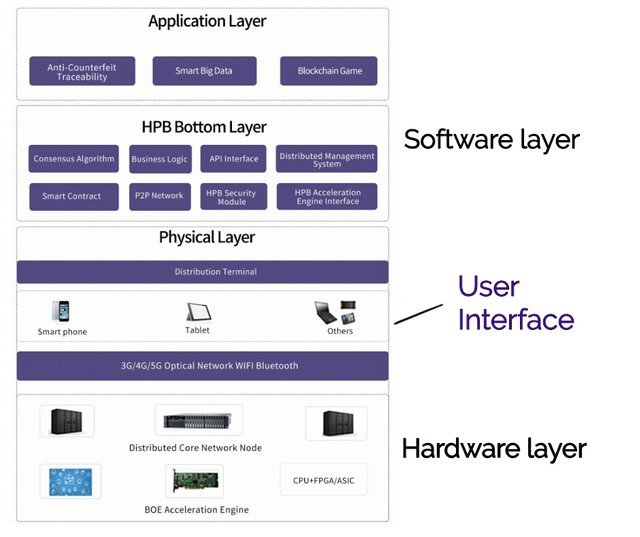HPB - The Ultimate Solution To Scalability
Blockchain brings about a new way of arranging data in a secured yet immutable way. Chronological order of data sets in a chain ensures each data is unchangable and can be traced/recover irregardless of time they were created.
This new way of securing, sorting and verifying informations in their original state brings huge hope and potential use case to many industries, such as in supply chain, logistics, managements and many others.
As promising as blockchain technology is, its current state still render it useless or a joke to many on-lookers. The most nagging problem being its inability to process large transactions at a time.
Well known bitcoin and ethereum blockchains can only process about 7-13 transactions per second between them. This is a huge headache to many lovers of the tech as they are made to wait for several minutes or sometimes hours depending on the network load before a transaction could be processed.
If surely we want to sustain the existence of our new found innovation, then there is a need to find a solution to "scale" blockchain tech.
So far, many projects have developed series of software architecture to tackle this issue but the approach is proving difficult to really achieve the goal.
HPB "High Performance Blockchain" looks beyond this scope and conclude that the answer to this problem is through the combination of hardware and softwarearchitecture.
How HPB aims to address scalabity through hardware and software architecture.

Present performance state of blockchain render its usefulness to be within the scope of low application level. With the need to enable real-world business adoption level, the tech must be developed to process several thousands of TPS.
HPB is setting the bar high by aiming at a million TPS, which is designed to be achieved through a new innovation termed BOE "Blockchain Offload Engine".
BOE simply put is an architecture design that brings about the use of _"software" _ and "hardware" to collaboratively work together and allow the concurrent use of the network by millions of users, a process which will be achieved by combining CPU serial capabilities and parallel capabilities of FPGA/ASIC chips with compatible high performing softwares.

The picture above is a description of the different layers of the BOE architecture.
Needed Secuirty Approach.
To ensure optimum security of the network, block broadcasting and transactions done on the network would be confirmed through a signing process generally known as ECDSA "Elliptic Curve Digital Signature Algorithm".
This signing process would be embeded into the BOE acceleration engine in other to facilitate high speed rate by which confirmations are done as previous software level of ECDSA can only power few thousands of transactions.
What Consensus will rule the Network?

Decentralization is the #1 reason why blockchain technology is loved by many, as it ensure computing, storage and management of a system is not in care of a single entity but rather in a distributed network form of "nodes". To allow the system to work as a whole and prevent the unnecessary or bad interaction from outside the network, a consensus rule must be formed to which the system will only listen to.
Current consensus model such the PoW, PoS, dPoS, BFT, PoA each wth its own advantages and disadvantages is considered not perfect for the BOE framework, therefore a new consensus model called the "efficient two-tier election mechanism" is introduced which comprises of two parts namely; outer elections and inner elections.
Outer elections: is conducted by evaluating and selection of high contribution nodes from list of candidate nodes by this factors.
• BOE hardware engine configuration
• Network bandwidth contribution
• Reputation assessment
• Node uptime
Inner election : carried out by the anonymous voting mechanism of "hash queue" to prioritize "high contribution nodes" to be the first generator of blocks. This voting process would be carried out in three stages.
- nomination stage
- statistical stage
- computing stage.
Process of the three stages can be read from the official whitepaper
The process by which these two voting processes are carried out ensure this consensus model is efficient, highly secure, and with high level of privacy.
The Ultimate Engine For Smart Contracts
The breakthrough of the Ethereum blockchain is it's introduction and ability to run "smart contract". For smart contracts to be well propagated Ethereum developed a software machine called the " Ethereum Virtual Machine".
As a high computing blockchain HPB will run a "General Virtual Machine" which is built and would continue to be developed base on the need. At current stage HPB "GVM" is capable of supporting both 'Ethereum Virtual Machine' and 'Neo Virtual Machine" - the two most popular and adopted virtual machines for running contracts. The adoption of the GVM would aid any virtual machine running on it's functions to improve the speed and efficiency of processes carried out on it.
To further aid in development, HPB 'GVM' will allow flexible auditing of smart contracts and as more business are build around it, a more generalise "Template" would be develop for easy execution of contracts.
Conclusion
Scalability is an urgent and integral development in the blockchain space. Any project that is able to fully address this problem would gain an explosive recognition and adoption as it will bring about widespread use of blockchain technology.
HPB seems to have found the answer by combining hardware and software architecture introducing us to the future we have been dearly waiting for.
Do you think HPB technological approach is a good answer to solving scalability?
Don't hold back to voice your opinion below.


.jpg)